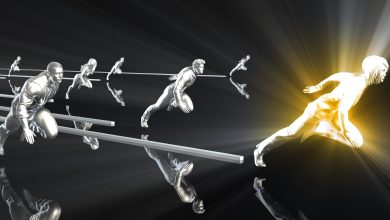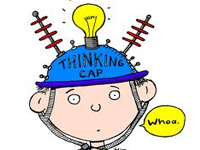
The future – can you cope?
The future and its effect on your business is here and you had better start thinking how you will cope. Your decisions will determine the look of your balance sheet.
Today’s consumer has vastly different and more sophisticated expectations of product, service, value and environment than five or even three years ago. In the new multichannel reality, the boundaries between virtual and physical space are becoming blurred.
The world of customers is now more dynamic and more interactive, with 86 per cent of consumers using their mobile or smartphone for Internet access on a daily basis.
The customer experience is changing as consumers adapt and become more connected: they are constantly connected to the Internet through smart, portable and highly usable devices; they are in control of the technology they use and also expect the latest technology from retailers.
As consumers become savvier, they are increasingly taking charge of their own purchasing experience, identifying and leveraging many different sources of information and channels to optimise the different elements of their buying journey. This statement holds true equally well for a department store or resort. Already Deloitte research shows that 36 per cent of consumers would like to access product information by scanning a barcode with their mobile device and 14 per cent would like to use their mobile device as a substitute for their credit card.
So I am trying to look into the future for you and point to the kind of changes we can expect over the next ten years. And there are many impressive changes. Some are virtually on top of us now while others are a few years away.
Curiously, research shows that SMS is preferred to phone calls despite the fact that speech recognition is quickly overtaking standard input methods. From your point of view it means that you should be able to receive and respond to text messages at your front desk. I already use software which repeats on my PC all notifications received on my smartphone. It even permits me to instantly reply from the PC without having to fish my phone out of my pocket. There is no reason why you should not equip yourself with this system right now.
Added to this, my smartphone is set to integrate with my internal wifi network so all my communications are web based providing me with considerable savings. The exciting parts however will be based to a large degree on the web and advances in physics. But let me start, as they say, at the beginning.
“Moore’s law” is the observation that, over the history of computing hardware, the number of transistors in a dense integrated circuit doubles approximately every two years. The observation is named after Gordon E Moore, co-founder of the Intel Corporation, who described the trend in 1965 and thereby fathered the ubiquitous slogan Intel Inside.
With some digressions this law appears to be true. It also then explains how our technology is capable of advancing at, what has become, a breakneck speed.
Technology will be wearable but not necessarily like the smart watches that have failed miserably in consumer acceptance. It will come in the form of a “cloth” that is formed using nano technology. The arrival of this wonderful development in physics was originally defined as the end point to Moore’s Law. Not as it stands today but when scientists were still numerically several orders of magnitude short of the present.
We will be wearing silk like garments made from nano materials that will not only be waterproof and dirt proof but will also allow electronic devices to be “woven” into the cloth.
One of the significant uses will be in medicine. Due to the inbuilt computing capacity combined with the array of sensors already available to us we will have apps that will allow us to gather our own medical data of sufficient resolution and detail to have that forwarded to our doctors much the same way we transmit files over the Internet today. It is even conceivable that, as a result, simple prescriptions will be automatically sent to our chosen chemist for dispensing and collection.
The Internet will no longer be the Internet of things (IoT) but will become (IoE) the Internet of everything. To cater for the increase of data traffic the invisible web, which I wrote about a few articles ago, will actually become very much part of the new version of the Internet.
We will be surrounded by virtuality. Google’s Glass was the first illustration of the concept where you could hear and see things that really were not near you at all.
That technology will be reshaped in a more acceptable and less clumsy form. We will probably see virtual buttons that we can push to activate devices yet these buttons will not be a lump of hardware we will have to cart with us. Electronic implants will make a myriad of technologies portable in our bodies – and a few of these already exist.
Hovercraft type wheel chairs will be in common use and will be controlled by invisible assistants. Google’s driverless cars, which are already on some American roads as test vehicles, will be an everyday reality. Spare parts, human or mechanical, will be manufactured on demand using 3D printing. Imagine emailing a document that, when printed, will produce a heart valve or your replacement tail light.
At present the source of energy is an incredibly vexing question.
One of the major culprits is atmospheric carbon dioxide from the burning of fossil fuels like oil and coal. And for the past several decades, researchers have been looking for renewable energy resources to provide power to everyone without poisoning the Earth.
Some scientists think humans could be getting clean power collected from solar panels in space and beamed back down to Earth in our lifetime and some industry start-ups like California-based Solaren are predicting it will be a reality by the end of the decade. Not only would the energy source be continuous but it would also be clean and unlimited. That is, until the sun explodes some millions of years from now.
Laser beams were the popular choice for energy transmission but have proven themselves inappropriate to deliver large energy loads. Microwaves are an expensive yet plausible contender but we are also teetering on the edge of ionised beams that could be cost effective.
Money will become a novel rarity and security will be the major issue to confront our brave new world. My first concern is who will hack my fridge?
All this, and more, is only around the corner and certainly a reality within the next decade. If we are good managers we must now start planning those aspects that will have to change first in our business models.
This is just a tiny snapshot of what lies in store for us with much of it functioning over the Internet. I was encouraged to attempt this article since my last ten year prediction, as evidenced in our last magazine, turned out to be amazingly accurate. But I’ll leave the last word to DARPA’s Robert Colwell, who points out that “when Moore’s Law stops, it will be economics that stops it, not physics. So keep your eye on the money.”





